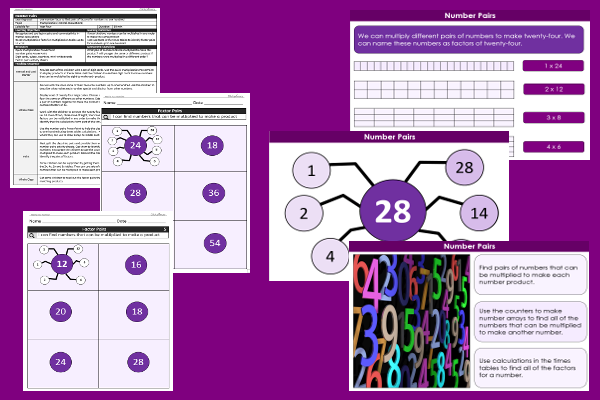Lesson Three – Number Pairs

This maths teaching pack for Key Stage Two gets the children to select and use a selection of special number facts to find and record pairs of matching factors for different numbers to one hundred.
The class can explain and model how to use facts in the times tables to identify the matching factor pairs for different numbers to one hundred that can be multiplied together to make each number product.
Download this teaching pack including a lesson plan, classroom activities and an interactive presentation to select and use a selection of special number facts to find and record pairs of matching factors for different numbers to one hundred
Activities in this teaching pack include a differentiated set of worksheets to find and record matching pairs of factors for different numbers to one hundred for core and extension ability levels and to thirty for support ability levels that match each listed multiplication product.
The interactive presentation gets the children to explore how to use different number facts to find pairs of factors for numbers to one hundred.
This lesson is part of a maths scheme of work to get the children to identify facts about the properties of numbers to support multiplication calculations including number facts and using calculations in the times tables. There are teaching activities for shared learning, differentiated worksheets to support independent learning and interactive presentations to introduce concepts and key skills.
-

Determinant Lists
Explain and model how to make lists of objects used and found in different locations to match the correct determinants of a and an
-

English SPAG Assessment
Assess abilities in composing sentences for fiction and non-fiction using the correct spellings, punctuation marks and grammar vocabulary phrases
-

Maths Arithmetic Assessment
Assess abilities in solving arithmetic number problems for addition, subtraction, multiplication and division when working with informal and formal written calculations
-

Environment
Identify and describe some of the special landscapes and locations that can be found in the world and reflect on how they can be protected and preserved for the future
